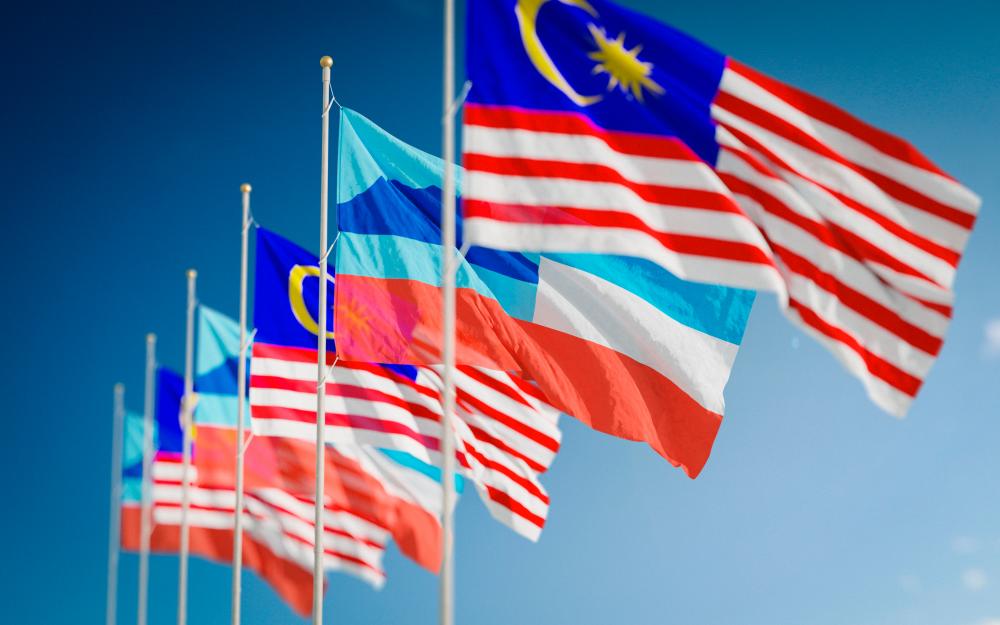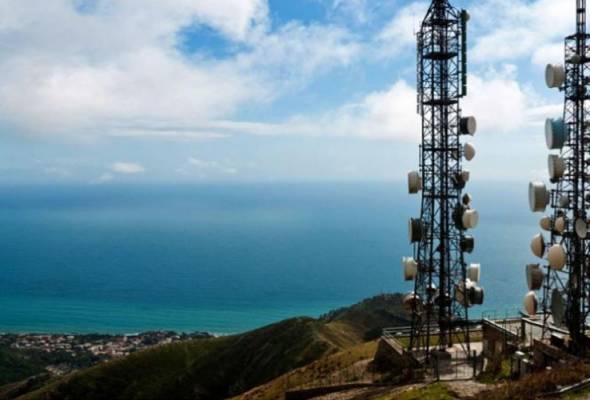
Published in The Malaysia Insight, Astro Awani and theSundaily, image by theSundaily.
The commitment from the Sabah state government to upgrade the existing 4G coverage by this year as well as install 5G networks as planned for under the 12th Malaysia Plan from 2023 to 2025 is encouraging news indeed – and harbinger of the next stage of development by enabling Sabahans to enjoy access to better digital infrastructure in the near future.
However, till today, Sabahans still face enormous challenges in enjoying better access to basic infrastructure ranging from water, electricity, well-paved roads to health and education facilities.
For instance, the recent water shortages at the Kota Kinabalu Industrial Park (KKIP) were relatively unexpected among the factory owners. They had to incur an additional cost by purchasing treated water supplies daily to continue their manufacturing operations.
Increased frequency of extreme weather patterns and events caused by climate change also led to more heavy rainfalls in Sabah. Excessive rains eventually resulted in more frequent flash floods in the west coast of Sabah (including Kota Belud, Kota Kinabalu, Papar, Beaufort, Sipitang and Bongawan), in particular. Many residents staying in flood-prone areas often experience constant power disruptions due to mud damaged electrical and home appliances.
As such, residents who were left with flood-damaged houses, vehicles, furniture and electrical appliances struggle to endure the double whammy of the on-going Covid-19 crisis affecting livelihoods and flood disasters.
On Sabah’s east coast districts, particularly larger districts such as Sandakan and Tawau, people are still generating electricity from power generators based in the west coast. Despite those in Sandakan and Tawau not experiencing blackouts often compared to a decade ago (i.e., once every two weeks), they still experience power disruption about once every three months.
Although a total of 892.2km of rural roads in Sabah were constructed and upgraded in the 2016-2020 period, only 52% of the 15 work packages for the Pan Borneo Highway Sabah project have been completed. According to Prime Minister Dato’ Sri Ismail Sabri Yaakob’s statement on March 4, 2022, the first-phase of works on the Pan Borneo Highway Sabah project is expected to be completed by October 2024.
In addition, Sabah has the smallest distribution of doctors compared with the Peninsula and Sarawak. In 2020, Sabah’s official ratio of doctors to the population was 1:872, lower than the national average of 1:441. Lack of medical specialists and amenities has tremendously raised the costs of healthcare among rural patients especially.
This is set against the deplorable pre-existing backdrop of rural residents often times having to drive on muddy, rut-imprinted, uneven roads or otherwise travel by boat to seek treatment in a public hospital located beyond the 5km radius from their living area.
Limited access to digital devices has also prevented some rural students from using online learning materials. Even before online learning became an issue, face-to-face learning was a recurrent problem too. Dilapidated schools are certainly not conducive to effective teaching and learning environments.
According to the Deputy Minister of Education II Datuk Mohamad Alamin, 31 out of 270 dilapidated school projects in Sabah were approved for upgrading between 2016 and 2020. Nevertheless, land issues have prevented the upgrading work to start or be completed.
For now, the Public Works Department (JKR) requires six acres of land for the construction of a primary school and 10 acres for a secondary school. However, some of the land parcels were too small, thus preventing the upgrading work for the dilapidated schools in Sabah to complete within the expected timeline.
Due to a limited number of Comprehensive Special Model Schools 9 (K9) – which offers schooling from Year One to Form Three – in the remote areas of Sabah, there is a lower number of children graduating. This in turn has a knock-on effect which means that as a result, only 12.7% of the rural workforce in Sabah had tertiary education qualifications in 2020.
Low education attainment and insufficient skillsets resulted in fewer Sabahans securing employment in better-paying, high-productivity and knowledge-intensive/highly-skilled sectors.
According to the 2019 Household Income and Basic Amenities Survey Report, only 14.4% of Sabah’s workforce are skilled workers. With most Sabahans having low-skilled jobs, median household income in rural areas is low: RM3,172 for Sabah as compared with the national average of RM3,828.
At the same time, due to an underdeveloped infrastructure, Sabah could not attract a sufficient critical mass of domestic direct investment (DDI) and foreign direct investment (FDI) to become a more industrialised and developed state. When there is a lack of a supportive ecosystem (i.e., the availability of local or home-grown technology, skilled talent, efficient supply chain and the necessary infrastructure), GDP growth is lower and, by extension, unemployment is higher.
With the lowest GDP growth (i.e., -9.5%) recorded compared to the rest of the nation in 2020, Sabah continues to record the highest unemployment rate in the country.
The unemployment rate in Sabah rose from 5.8% in 2019 to 8% in 2020 and 9% in the fourth quarter of 2021 (4Q21). Based on the statement from the Sabah Science, Technology and Innovation Minister Datuk Yakub Khan during the current state assembly sitting, there were 184,200 jobless people in 2021.
Instead of allocating extra expenditure for the installation of 5G networks, the Sabah state government should first re-negotiate with the federal government and ask for additional funding for basic infrastructure.
For example, there is a critical and urgent need for additional allocation of between RM200 to RM300 million to repair the badly damaged Mile 32 and Mile 28 of the Sandakan road in Telupid within Sandakan district.
Notwithstanding, Deputy Chief Minister of Sabah Datuk Seri Bung Moktar Radin indicated his plan to demolish the Sandakan road once the Pan-Borneo Highway is completed in two and a half years.
However, Sabahans might no longer be as patient in have to bear and endure the poor road conditions.
The state legislative assembly session on March 21 (Monday), 2022 went viral after Bung Moktar revealed budget constraints in repairing damaged roads. Many road users expressed their disappointment and complained about burst tyres and damaged cars arising from the recent flooding disaster in Telupid.
Hence, EMIR Research would like to suggest that the current Sabah state government re-evaluate its current infrastructure upgrading plans.
Following are some of the initiatives for the Sabah state government to look into:
- Conduct monthly reviews of all short-, medium- and long-term infrastructure development strategies, ensuring all plans are implemented within the specific time frames;
- Monitor the construction progress regularly to ensure the built infrastructure comply with requirements (e.g., construction industry standard by the Construction Industry Development Board/CIDB, road safety audit by the Public Works Department/JKR);
- Investigate illegal electricity supply connections and rampant water thefts to ensure adequate electricity and treated water supply within the state;
- Focus on upgrading of towers to 4G and expanding fibre optic networks to support the commercial development of communication infrastructure in the rural areas of Sabah, bringing connectivity to more rural households and entrepreneurs on top of bridging the urban-rural digital divide;
- Work closely with the federal government, Malaysian Communications and Multimedia Commission (MCMC) and local authorities to pre-empt variation in quality and costs of building digital infrastructure within the state;
- Increase crop diversification and produce high-quality agricultural products to diversify the revenue streams. Besides reducing dependence on palm oil, Sabah potentially could develop as a leading Borneo food hub together with Sarawak to fulfil the increasing demand from major markets such as Brunei, China and Singapore;
- Work closely with the private sector in rural areas to help attract higher value investments in precision or digital agriculture and smart farming, promote rural tourism activities and agrotourism, enable agriproducts to be sold via digital applications/online platforms and social media, as well as enhance employability of the rural population through knowledge enhancement and skills training; and
- Arrange discussions with the Ministry of Education Malaysia (MOE) and Ministry of Health Malaysia (MOH) to allocate more teachers and doctors teaching for the rural areas of Sabah. Encouraging more Sabahans to become teachers and doctors would eventually narrow the gap between the number of teachers/doctors required and the number of students/residents in a particular rural district of Sabah.
When the Sabah state government re-shift its development priorities to reflect the urgent needs of Sabahans, they would be able to enjoy better access to basic infrastructure. In turn, this would also assist Sabah to expand its economic presence outside of the state.
Amanda Yeo is Research Analyst at EMIR Research, an independent think tank focused on strategic policy recommendations based on rigorous research.

